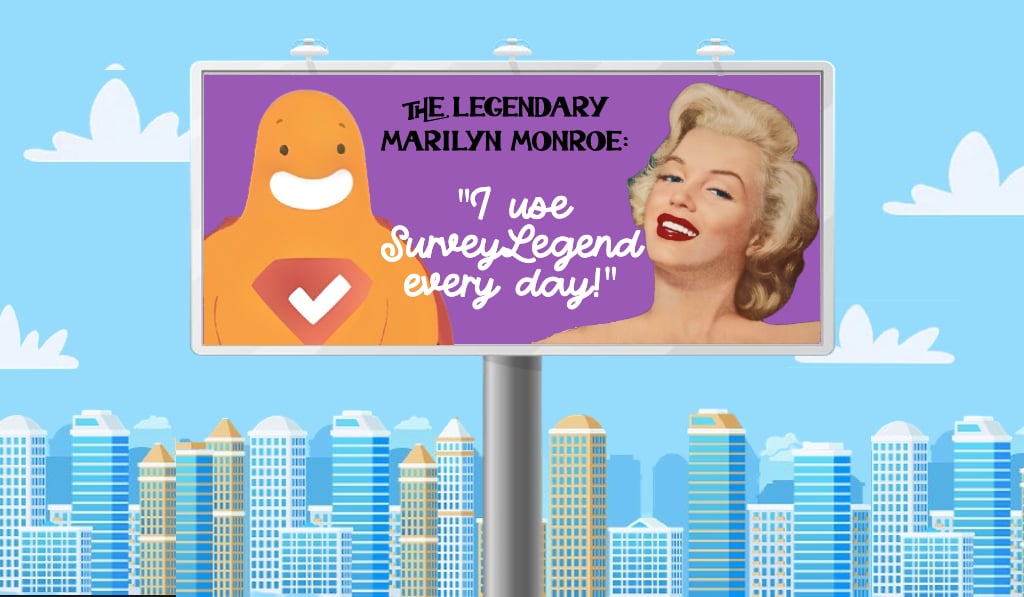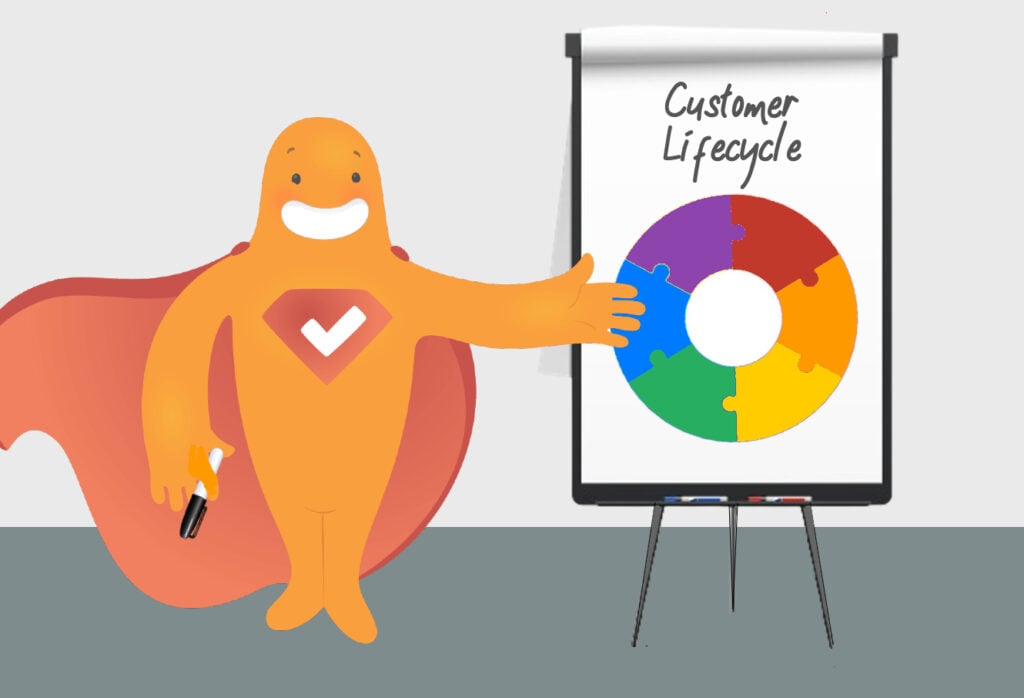Pareto’s rule says that 20% of your customers provide 80% of your total profits. That means collecting and analyzing data about new potential new customers is important for predicting customer behavior and determining which prospects are most likely to start a relationship with your organization. In this blog, we’ll look at all the reasons for creating a new prospect survey and show a survey example that you could send to potential customers.
Create your FREE new prospect survey or questionnaire now!
What is a New Prospect Survey?
A new prospect survey is a tool used by businesses or individuals to gather information and insights about potential customers or clients who have recently expressed interest in their products, services, or offerings. The primary goal of a potential customer survey is to understand the needs, preferences, and characteristics of these potential customers to tailor marketing and sales efforts effectively.
According to the CSO Insights’ Buyer-Seller Gap study, about 45% of prospects said they want to identify their needs and evaluate solutions before they engage with a salesperson. Conducting a survey before a salesperson reaches out to leads is a great way to help them do this.
Create your FREE new prospect survey or questionnaire now!
15 Reasons to Conduct a New Prospect Survey
New prospect surveys can be conducted through various means, including online forms, phone interviews, or in person meetings. Conducting new prospect surveys can benefit businesses and organizations in a number of ways:
1. Gathering Information
One of the first things a good prospect survey should do is collect data about the lead, including their demographics, contact information, and the specific products or services they are interested in. Demographic questions can really inform companies as to which type of people are most interested in a product or service.
2. Understanding Customer Needs
New potential customer surveys help you gain insights into the specific needs and preferences of potential new customers. This understanding allows you to tailor your products, services, and marketing strategies to better meet those needs.
3. Understanding Pain Points
Some prospects may be facing challenges that a product or service is designed to solves. Understanding what goals or outcomes a lead is hoping to achieve with your offering can help you market it better to them.
4. Creating Targeted Marketing
By collecting information about prospects’ demographics, interests, and preferences, you can create more targeted and effective marketing campaigns. This can save time and resources by focusing your efforts on the most promising leads.
5. Uncovering the Source of Discovery
A prospect survey often will ask how a lead heard about your company, product, or service. They may have seen or heard an advertisement, read a review, or been turned on to it by a friend through social media. Understanding where a customer first discovered you can help you focus your advertising efforts on a particular medium.
6. Improving Sales Conversion
When you know what prospects are looking for and their buying intent, your sales team can approach them with more relevant and compelling offers. This can increase the likelihood of converting potential customers into paying customers.
7. Personalizing Communication Channels
Knowing how prospects prefer to be contacted (e.g., email, phone, SMS, social media, in-person meetings) and what information they are interested in allows you to personalize your communication. This can lead to more engaging and meaningful interactions.
8. Lead Qualification
Not all potential customers are equally likely to convert. A potential customer questionnaire or survey can help you identify high-quality leads and prioritize them. This can improve your sales team’s efficiency and increase conversion rates.
9. Competitive Insight
By asking about prospects’ experiences with competitors or similar products or services, you can gain valuable insights into the competitive landscape. This information can help you differentiate your offerings, avoid mistakes of the competitors, or copy what has worked for them.
10. Feedback for Improvement
A potential customer survey provides an opportunity for prospects to share their feedback and suggestions. This can help you identify strengths and weaknesses, as well as areas for improvement in your products, services, or customer interactions.
11. Building Customer Relationships
Surveys can help you start building a relationship with potential customers. It shows that you care about their opinions and are committed to meeting their needs.
12. Assessing Buying Intent
The prospect survey should ask about someone’s timeline for making a purchase or decision, as well as their budget constraints. You may also ask if they’ve made similar purchases in the past to gauge their likelihood to buy from your company.
13. Collecting Data for Decision-Making
The data collected from new prospect surveys can inform your strategic decision-making. Answers collected from customer survey questions can guide product development, marketing campaigns, and customer service initiatives.
14. Building Customer Loyalty
Understanding prospects from the outset can help you set the stage for positive long-term customer relationships. When potential new customers feel that their needs are understood and met, they are more likely to become loyal customers, which reduces customer churn. Be sure to also read our blog on creating a customer churn survey.
15. Obtaining Permission and Consent
You may want to ask prospective customers if you have their permission to use your feedback or survey responses for marketing and research purposes. You’ll also want their permission to send additional communication whether via email, text, phone, and so on (also known as opt-in permissions).
Create your FREE new prospect survey or questionnaire now!
New Customer Survey Examples
Here’s a look at a customer prospect survey created with free survey maker tool SurveyLegend for a fictitious company called Great TV. You’ll see various types of questions are used to increase engagement and response rate. SurveyLegend will automatically collect survey responses, giving you valuable data that you can analyze to identify and prioritize leads. Learn more about creating a survey here.
Prospect Survey Welcome Page
SurveyLegend allows you to create a Welcome Page which states the reason for the survey. This lets survey participants know you care about their opinions and are interested in developing a relationship.

Prospect Survey Page 1
Page one of the survey asks the prospect why they are considering the service. Remember to always include an “other” option in case their reason doesn’t fit into your pre-given answers. You can always include an open-ended question that allows them to tell you more, or you can remove “other” responses from your analysis.
The next two questions aim to get some feedback on the competition by asking which streamer the participant currently has and why they may not be happy with it.

Prospect Survey Page 2
The second page asks how prospects heard about the service so that future marketing efforts can focus on the right medium. It also asks about the likelihood of the person subscribing, permission to contact them again, and for any other feedback.

Prospect Survey Thank You Page
The survey concludes with a thank you page. It’s important to keep prospect surveys short (known as microsurveys), as the prospect is not yet a customer and may not feel they owe you any answers; if the survey is too long, they’re less likely to participate. The concluding thank you page does offer them a money-saving deal to subscribe now in an attempt to convert them immediately.

Conclusion
Conducting new prospect surveys is valuable for gaining insights, personalizing your approach, improving sales conversion, and building strong customer relationships. It helps you align your strategies with the specific needs and wants of your potential customers, increasing your chances of success in the market. Ready to create your potential new customer survey? It’s easy and free to start with SurveyLegend!
Do you regularly survey prospective customers? Did you achieve a good response rate or collect valuable insight? Will you try SurveyLegend for prospect surveys? Let us know in the comments.
Create your FREE new prospect survey or questionnaire now!
Frequently Asked Questions (FAQs)
A prospect survey or potential new customer survey is a tool used by companies to collect information and insights about people who have expressed interest in their products, services, or offerings.
They are different. Leads are people at the very top of your sales funnel who are aware of your company and your product but have not been qualified, while prospects are leads who have been qualified and deemed likely to buy.
It’s best to send a potential new customer survey as soon as they have engaged with your company (e.g., visited your website, posted on your social media page, stopped by your store). This is because the experience with your company is freshest on their mind right after interacting with it.





